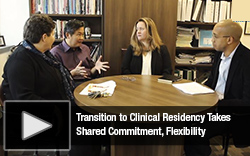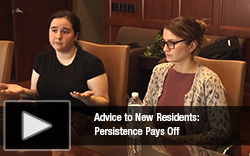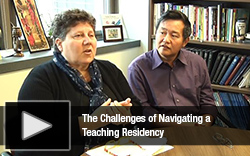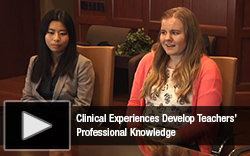Adjusting to Challenges, Urban Residency Reaps Benefits
Five new videos are available this week in AACTE’s Research-to-Practice Spotlight Series highlighting the urban residencies of the State University of New York (SUNY) Oswego School of Education. In the latest videos, educators discuss the professional growth they experience through their partnership work, the primary challenges they’ve faced, and advice they’d offer others looking to transition to a clinical residency.
Teachers of English as a new language (ENL) at Grant Middle School in Syracuse, New York, say they are fortunate to host preservice teachers from the SUNY Oswego TESOL program, who spend their full senior year working with them and other city schools in a coteaching residency.
Principal Pamela Odom explains why this partnership with SUNY Oswego benefits her school, saying the residents “have brought in new ideas and new programming and shared that with our teachers, and been reflective of how to incorporate and embed language content in our existing curriculum.” In addition, candidates’ level of confidence and experience allow them to contribute meaningfully in the school’s “personalized blended learning” model.
“I have truly come to rely on this program because I love having another person in the classroom with me,” says Grant ENL teacher Angela Alessandro.
“The program has been going since 2006,” says Oswego’s Jean Ann, a TESOL faculty member. “But in 2012 and 2013 we made a really big change to make it clinically rich so the students can have a residency experience, and it’s really been amazing.” Becoming an ENL educator takes a lot of work and a lot of help, she explains, to be able to connect a student, family, school, and community successfully. “And I think they’re getting it now.”
“It’s almost like we combine that clinical learning experience with an induction year,” says Assistant Professor Anneke McEvoy.
Getting to this point hasn’t been easy. Program faculty cite early hurdles in starting the program, such as reluctant host teachers and students’ heavy advising needs to navigate requirements–but say these have disappeared as the program matured and participants had clearer, more positive expectations.
Teacher residents say they’re still challenged by the workload, balancing full-time teaching with evening classes, and by managing logistics such as transportation (and even housing) for their senior year in Syracuse–a 40-mile distance from campus.
It’s all worth it, says candidate Taryn Suprenant. “Even if it feels like you are overwhelmed, the payout is so much bigger than you would ever imagine it to be,” she says. Program alumna Jennifer Harbin, now a teacher in the Syracuse City School District, adds, “You certainly get out of it what you put into it.”
The transition to the residency program has been facilitated by a shared vision among the partners and a willingness to adjust along the way.
“Having the ability to acknowledge, understand, embrace, and correct mistakes is very important,” says Oswego Curriculum and Instruction Chair Marcia Burrell.
ENL teacher Jim Gavigan of Fowler High School feels that the program’s development has been organic and praises the university partners for being open to feedback and continuous improvement. “I have a lot of respect for Pat [Russo] and for the program that is growing up–that is ever evolving,” he said.
Click on the video thumbnails above to view this week’s set of interviews. They can also be found on the AACTE Video Wall along with last week’s videos, which you can read about here.
Tags: clinical preparation, content areas, inclusion, school-university partnerships











